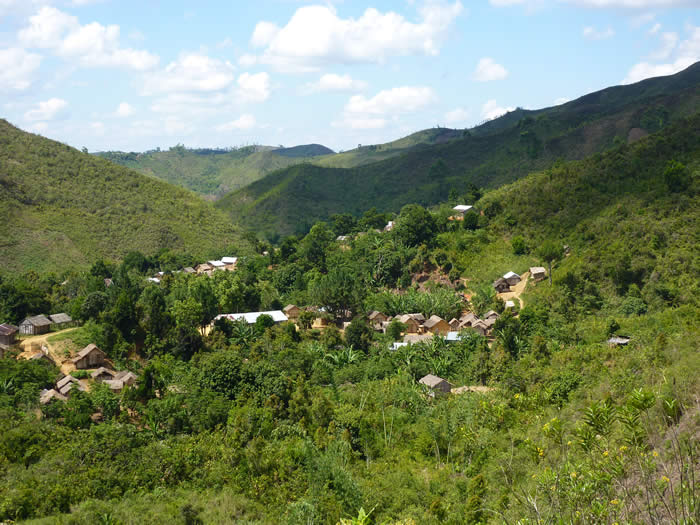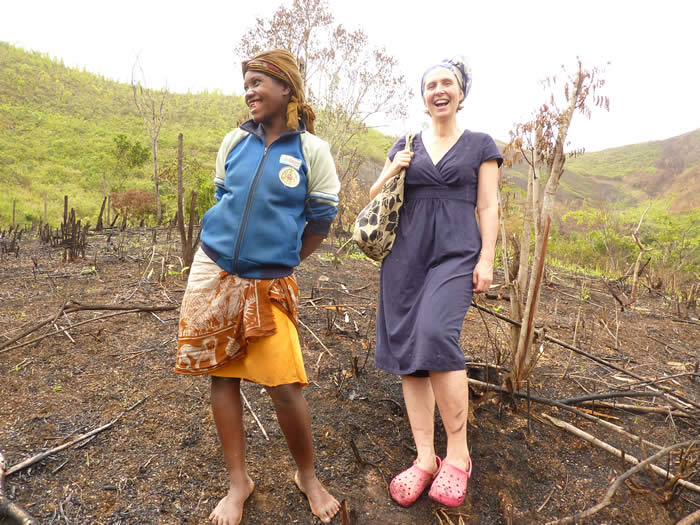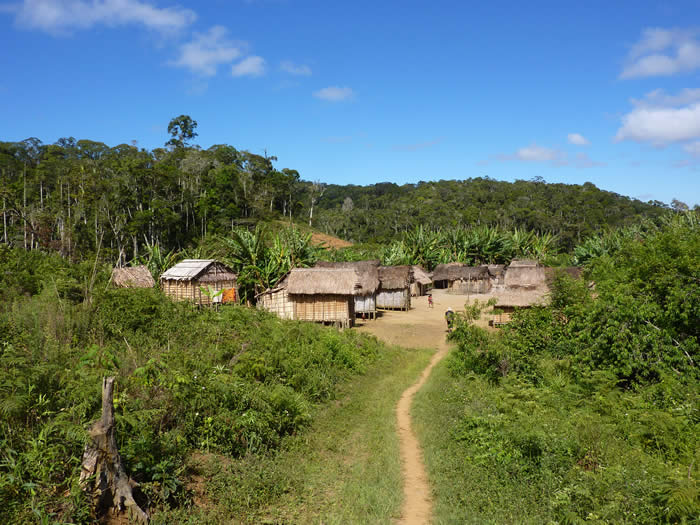
p4ges - Can Paying 4 Global Ecosystem Services reduce poverty?
Julia Jones reflects on the influence of protected areas of rural livelihoods in Madagascar

Fresh back from a recent visit to Madagascar and some field research sites, Julia Jones gives her thoughts
 |
 |
 |
This week 5000 delegates met in Sydney at the decadal World Parks Congress. High on their agenda was considering how parks in low income countries can contribute to the livelihoods of those living around them, and how any negative impacts of conservation restrictions can be avoided. I am not able to follow these discussions as I am on the edge of Zahamena National Park in Madagascar. It is a good place to reflect on the impacts of national parks on livelihoods.
Zahamena National Park is amazing. From the village we can hear from haunting cry of the Indri, the largest lemur in Madagascar and the incredible shouts of the black and white ruffed lemur. These sounds are sadly absent from much of Madagascar’s forests as they suffer heavy hunting in many areas. I am staying in Antevibe, 7 hours slippery walk from the nearest road access. Like most communities in rural Madagascar the economy is heavily dependent on natural resources. The houses are made of wood, bamboo and thatch and people live on what they grow and the small surplus they can sell. Access to health and education is limited. There is a school in the village but with a 2 day walk to collect wages every month, it is perhaps not surprising that the teacher isn’t actually in post at the moment. The doctor visits just once a month.
The national park authority do their best to ensure that any benefits from tourism receipts are distributed locally. I saw bee hives donated by the park (along with training in honey production) in use. The park also work closely with a community committee (the CLP) who are involved in monitoring and maintenance activities. However these benefits are quite marginal. How can this community really benefit from the world famous biodiversity which surrounds them?
My feeling is that the real limit on development in this area is not the existence of the park, and indeed probably anything the park can do will have a limited impact on people’s access to opportunities and a route out of poverty. If people here could expand agriculture unrestricted, then yes individual households would be better off, at least in the short term. BUT they would still be poor and their access to health, education etc would still be very limited. As biodiversity is a unique selling point of their area, if this is lost then the opportunity to benefit from their unique biodiversity would be lost, even if a way to benefit it could be found in the future.
A key requirement for benefits to be really felt here has to be the development of Madagascar as a whole. What is needed are improvements to infrastructure, communications, governance and institutions. With a new democratically elected government many are hoping for such change. But major change is likely to be slow. In the short term, any search for mechanisms to improve the benefit flows from national parks to local people must involve the views of the people most strongly influenced; those living in places such as this, on the edge of Madagascar’s forests.
Julia Jones
Date: 28th November 2014

